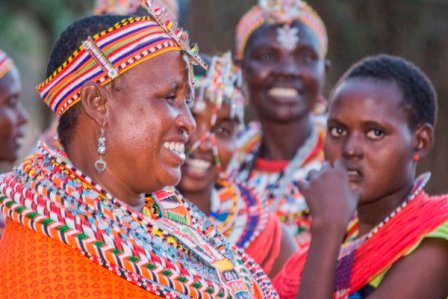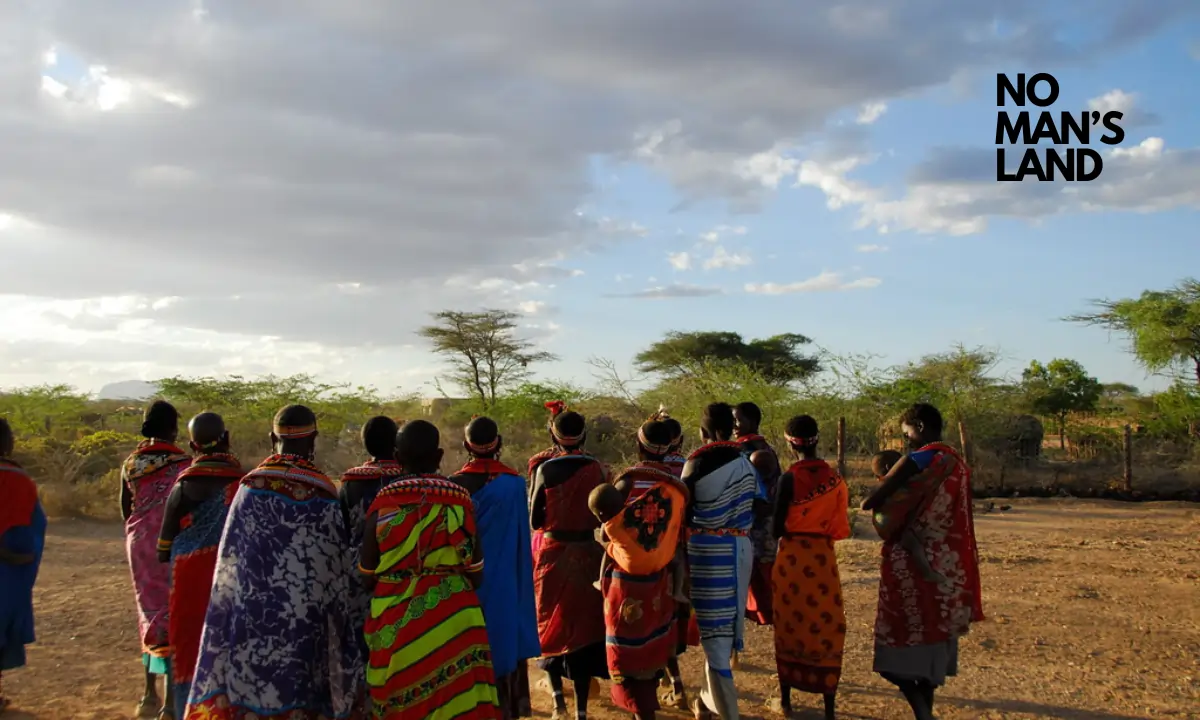Have you heard about any place where only women are allowed to stay? Though it seems to be unrealistic, such a place is available in reality. There is a village in Kenya, Africa, which is known as Umoja, which is the place where women are only used to stay who were the victims of sexual violence. Though men can visit the village they are not permitted to stay in the village. Though all the women living in Umoja originally belonged to the different Samburu villages situated across the Rift Valley of Kenya, Africa, there is one thing common among all of them that they have suffered from sexual violence, forced marriages or rape.
Tribal groups scattered across the world are well known for having their own unique culture, customs or unique festivals and celebrations. The residents of Umoja, who belong to the Samburu tribe of Kenya, Africa, have come to the attention of the people across the world due to their unique conditions to stay in their village.
Prevalence of Sexual Violence in Kenya
Over the decades, Kenyan society has been majorly dominated by men, making the culture of the society patriarchal. Men have been recognised as the rulers of the villages and cities whether it is homes or the workplace. They are also actively engaged in brutality and widespread violence against women. It has been reported that around 40.7 per cent of women have been found to be confronting sexual violence in Kenya in their lifetime. According to the survey in 2019 regarding the violence against children, it has been found that approximately 15.6 per cent of women were the victim of childhood sexual violence in Kenya.
Apart from psychological trauma, the survivors of women brutality and sexual violence in Kenya also have to face a number of challenges, which include getting minimal support from others, limited service provision and funding benefits, and feeling ashamed in front of others. In simple words, they have to live with a lot of difficulties for the rest of their life.
The origin of Umoja Village

The inception of Umoja village can be tracked in 1990, in which there was the significant participation of a group of 15 women surviving sexual violence by local British soldiers. The village is situated approximately 380 km away from Nairobi, which is the capital of Kenya, Africa. The founder of the village is Rebecca Lolosoli, who has been beaten by a group of men and admitted to a hospital for recovery before the establishment of the village. She has been beaten because of speaking and raising her voice regarding the rights of women in her village. This led to the undertaking of the decision to build an only women-centric community.

The population of Umoja village has increased over the years, and now the village has become the habitat of several women who escaped from child marriage, victims of domestic violence and rape or FGM (female genital mutilation). All the first members of the village are found to be coming from the remote Samburu villages spread across the Rift Valley, where only the authority of male voices works. The Umoja village provides the opportunity for women to be involved in trading, living and raising their children independently without fear of discrimination and male violence. The number of women in the village is more than 47, while there are also approximately 200 children in the village.
Only on occasions and festivals can men meet the women belonging to the community. Nevertheless, it is solely decided by Rebecca who can come and go out in the village. However, all the women living in the village have the right to set the rules for their community under the tree of speech, which is a place for the gathering and discussion on the various problems. Though the young girls can meet their male partners, they have to go outside the village for this purpose. Moreover, though the male children are allowed to stay in the village they must need to depart from the village after crossing 18 years of age.
Problems in the formation of the village
Lolosoli had to confront a multiple number of challenges in establishing the village. During the visit of Lolosoli to the United Nations in 2005, a court case against her was filed by the men living in the neighbouring village. The former husband of Lolosoli was also found to be attacking the village in 2009, which posed a life threat to her. This led her to leave the village for a time for safety. Since establishing the village, she has received several threats as well as confronted attacks from the local men. Furthermore, the cattle of the villagers are regularly stolen by the local men.
Lifestyle at Umoja village
The arrival of the new eligible members in Umoja village is often welcomed by the dancing and singing of the living women. For wearing, they prefer the traditional Samburu dress, which involves brightly coloured shirts, patterned skirts and a kanga, which is a colourful wrap attached to their shoulders.
The women in the Umoja village are self dependent in terms of undertaking any decisions as well as managing expenditures. A regular income is earned by the women and girls which serves as the fulfilment of the basic requirements, including clothing, food, and shelter. In the initial period, the villagers used to sell vegetables by buying from others due to their lack of knowledge of farming by themselves.
This has been proven to be unsuccessful which led them to decide to sell traditional crafts and jewelry to tourists. While visiting the nearby nature reserves, several tourists prefer to visit the village. In this regard, a minimal entrance fee is charged by the villagers from the tourists which also contributes to the livelihood of the villagers.
These initiatives of the villagers have gained the attention of the Kenya Wildlife Services which facilitates the women to connect with the successful groups to learn regarding the improvement of Umoja’s business. The women also get benefits from the Ministry of Culture and Kenya’s heritage and social services. There is also a proper school in the village which offers quality education to more than 200 children in the village.
FAQ
1. What is Umoja, and who is allowed to live there?
Umoja is a village in Kenya, Africa, where women are only used to stay who were the victims of sexual violence.
2. What are the main reasons women seek refuge in Umoja?
Women seek refuge in Umoja when they have suffered from sexual violence in Kenya, forced marriages or rape.
3. Who founded Umoja village and why?
The founder of the village is Rebecca Lolosoli, who has been beaten by a group of men and admitted to a hospital for recovery before the establishment of the village. She has been beaten because of speaking and raising her voice regarding the rights of women in her village. This led to the undertaking of the decision to build an only women-centric community.
4. How do the women in Umoja village sustain themselves economically?
The women in the Umoja village are self dependent in terms of undertaking any decisions as well as managing expenditures. A regular income is earned by the women and girls, which serves as the fulfilment of the basic requirements including clothing, food, and shelter.
5. What challenges has Umoja Village faced since its establishment?
Since establishing the village, Lolosoli has received several threats as well as confronted attacks from the local men. Furthermore, the cattle of the villagers are regularly stolen by the local men.


